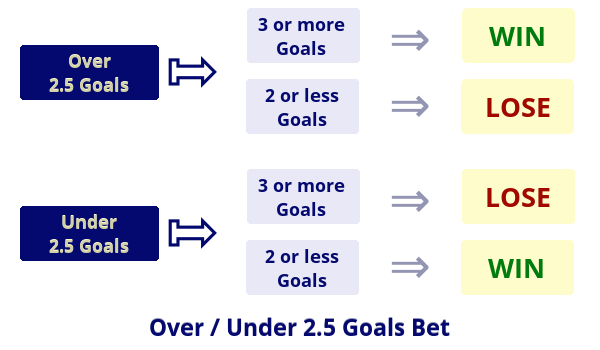
Betting Terms Over/under betting is a popular way to bet on sports. We explain exactly how betting on totals works with examples from the NFL, NBA and others!

Betting Terms Over/Under – What does Over/Under mean?
The Over/Under is a set of odds where you bet on whether the combined score will be higher or lower than the projected total number set by the oddsmakers. If you believe that more points will be scored than the target total, you bet the over.
If you believe there will be fewer points scored than the projected total, you would bet on the Under, Over/under betting, or total betting, is one of the most popular options for sports bettors along with the points spread and money line.
All bets are based only on the number of points scored, there is no link to the outcome of the game. Over/under betting is available in almost all sports, including NFL, college football, NBA, MLB, and NCAA basketball. Total, you will bet the Over.

Over/Under betting explained
Let’s look at the total betting from Super Bowl LIV as an example of how to calculate Over/Under odds.
Super Bowl Over/Under

Based on these odds, the Over/Under for Super Bowl LIV between the Kansas City Chiefs and San Francisco 49ers is 53 points. Each side of the total – Over and Under – is given the value of the bet, also known as juice or vig. The vig for most Over/Under bets is -110 on each side, which means that in order to win $100 betting on the Over or the Under you will have to bet $110.
Kansas City won Super Bowl LIV by a final score of 31-20, with both teams scoring a total of 51 points. That means the Super Bowl fell short of the projected 53 points. Anyone who bet on the under 53 won their bet, while anyone who bet on the over 53 lost.
How to bet the Over/Under
Before placing an over/under bet, you need to decide whether the collective score will be higher or lower than the oddsmakers’ total and if you should bet now or later – because the over/under can change. Then you’ll want to understand the total vig/juice and how much you stand to win
NBA Over/Under

In this example, the total for this game between LA Clippers and LA Lakers is set at 222.5 points, with the vig on both the Over and Under set at -110.
Oddsmakers will often use half a point when setting over/under totals, which means there is no chance of landing on the estimated total for the final score.
If you bet Over you could predict 223 points or more, and if you bet Under you could predict 222 points or less.
MLB Over/Under
Betting Terms Over/Under

Looking at the MLB, the total bet for this game between the Washington Nationals and Los Angeles Dodgers is set at 7.5 runs. However, the Over has a vig of -120 while the Under is set at +100 or EVEN money.
This difference in vig may be because there is a slightly higher probability that the final score reaches a total of eight or more runs. It may also reflect the amount of money already betting on the Over, as sports books try to attract bets on the Under with a lower vig to balance the money on both sides.
If you bet Over, you will be betting on eight or more runs and will need to bet $120 to win $100. If you bet Under, you will be betting on seven runs or less and will win $100 if you bet $100.
What is the payout on an Over/Under bet?
Most over/under bets have a vig of -110 for both over and under. This is also known as a flat rate. This means that for every $100 you want to win, you have to invest $110 – or a payout of 91 cents for every $1 invested.
Sometimes sportsbooks will adjust the over/under bid to lure more money to one side. If a book took a lot of money at Over 53 (-110) and a little money at Under 53 (-110), they can change the vig to Over 53 (-115) / Under 53 (-105).
This gives the Under a better payout (95 cents per $1 bet on the Under compared to 87 cents per $1 bet on the Over) and creates action on the Under, balancing the money bet on both Over/Under side and profit guarantee. For the sports book regardless of the result.
How is the Over/Under determined?
Oddsmakers take several factors into account when setting over/under totals, beyond the basic offensive and defensive statistics of the teams involved.
Weather can have a significant impact on scoring output in outdoor sports such as football and baseball, with wind serving as the most effective conditions.
The amount of money bet on the Over or Under can also determine the total. If more money is bet on the Over, sportsbooks can increase the total to entice them to bet on the Under. If more money is bet on the Under, sportsbooks can lower the total to draw money on the Over.




